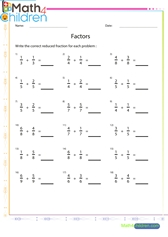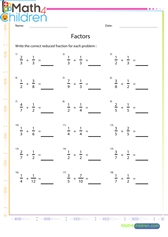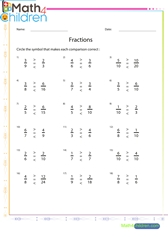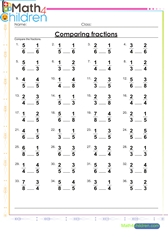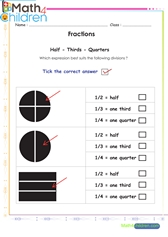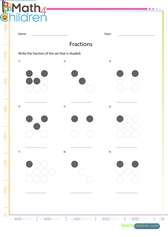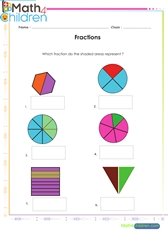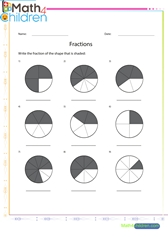![]()
How to Multiply with Fractions: A Comprehensive Guide
Multiplying fractions is an essential skill for anyone learning math, whether you are a student, teacher, or simply someone who wants to brush up on their math skills. The process of multiplying fractions can be intimidating at first, but once you understand the basics, it becomes much easier. In this guide, we will take you through the process step by step, from understanding the basics to mastering more complex problems.
Fractions shown with circles squares
Fractions shown with circles squares printable math worksheet
Understanding the Basics of Multiplying Fractions
Before we dive into the process of multiplying fractions, it is important to understand some basic concepts. These include:
- What are fractions?
- How do you represent fractions on a number line?
- What is the meaning of the numerator and denominator of a fraction?
H3: Multiplying Fractions with Like Denominators
When you multiply fractions with like denominators, the process is relatively straightforward. You simply multiply the numerators together and write the result as a fraction with the same denominator. For example:
- 2/5 x 3/5 = 6/25
Multiplying Fractions with Unlike Denominators
Multiplying fractions with unlike denominators can be a bit more challenging, but it is still a straightforward process. To multiply fractions with unlike denominators, you need to follow these steps:
- Find the lowest common denominator (LCD) of the two fractions.
- Convert both fractions so that they have the same denominator as the LCD.
- Multiply the numerators together and write the result as a fraction with the LCD as the denominator.
- Simplify the fraction if possible.
For example:
- 1/3 x 2/5 = (5/5 x 1/3) x (3/3 x 2/5) = 5/15 x 6/15 = 30/75 = 2/5
Multiplying Mixed Numbers
Multiplying mixed numbers requires a bit more work than multiplying fractions, but it is still a relatively straightforward process. To multiply mixed numbers, you need to follow these steps:
- Convert the mixed numbers to improper fractions.
- Multiply the two improper fractions together.
- Simplify the resulting fraction if possible.
- Convert the resulting fraction back to a mixed number if necessary.
For example:
- 2 1/2 x 3 2/3 = (5/2) x (11/3) = 55/6 = 9 1/6
Tips for Multiplying Fractions
Here are a few tips to keep in mind when multiplying fractions:
- Always simplify the resulting fraction if possible.
- Remember to convert mixed numbers to improper fractions before multiplying.
- If you're having trouble finding the LCD of two fractions, try breaking the denominators down into their prime factors.
FAQs
Q: What is a fraction? A: A fraction represents a part of a whole. It consists of a numerator (the top number) and a denominator (the bottom number).
Q: What is the lowest common denominator (LCD)? A: The lowest common denominator is the smallest number that both denominators in a fraction have in common.
Q: Can you multiply fractions with whole numbers? A: Yes, you can. Simply convert the whole number to a fraction by placing it over 1.
Conclusion
Multiplying fractions may seem challenging at first, but with a little practice and patience, you can master this essential math skill. By understanding the basics, following the steps for multiplying fractions with like and unlike denominators, multiplying mixed numbers, and following some tips and tricks, you can confidently solve more complex problems involving fractions.
Remember to simplify the resulting fraction if possible and to convert mixed numbers to improper fractions before multiplying. You can also break down denominators into prime factors to help find the LCD for fractions with unlike denominators.
With these tools in your arsenal, you can solve problems involving fractions more efficiently and effectively. Keep practicing and don't be afraid to ask for help if you need it.
We hope that this guide has helped you understand how to multiply with fractions and that you are now more confident in solving fraction multiplication problems. Happy calculating!

